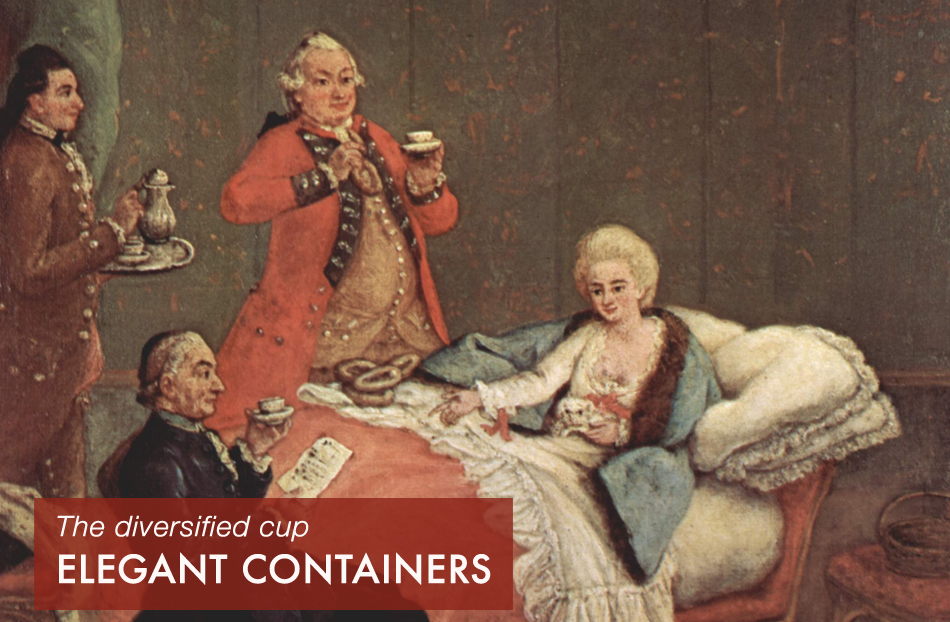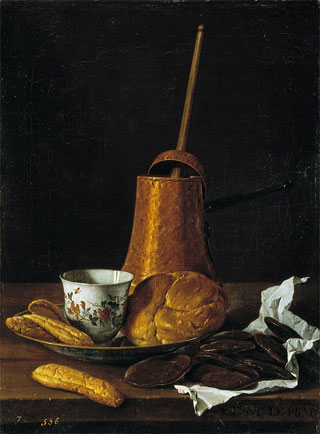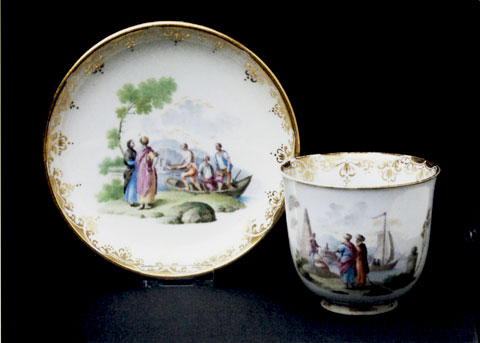

Luis Egidio Meléndez, Still Life with a Chocolate Service, 1770. Madrid, Museo Nacional del Prado
Royal Factory of Capodimonte, Cup and saucer with port scenes, . 1750. Lovere, Galleria dell'Accademia Tadini
Top: Pietro Longhi, Early Morning Chocolate, c. 1774–1780, detail. Venice, Museo del Settecento Veneziano di Ca' Rezzonico
Today, what distinguishes one cup from another is its usage and size: the espresso cup, the smallest of all, contains around 50 ml of liquid, the capacity of the tea, chocolate and coffee cup varies between 120 and 150 ml, while larger still are the breakfast cup (around 250 ml) and the soup cup (from 350 ml), characterised by the presence of two handles.
Since the 18th century, the cup has formed part of sets completed by other objects expressly devoted to drinking a specific beverage. This led to the creation of coffee, chocolate and tea sets. In addition to cups and saucers, a set also included a pot for pouring the drink. While it is often difficult to distinguish between a coffee pot and a chocolate pot, because they were often interchangeable, the tea pot can be recognised by its fairly rounded shape borrowed from the Chinese design. Other distinguishing features could include a wide lip, more suited to a thick drink like chocolate, the long spout that characterises tea and coffee pots, and the straight wooden handle of the coffee pot, but above all of the chocolate pot. The set also included a sugar bowl and a milk or cream jug.

